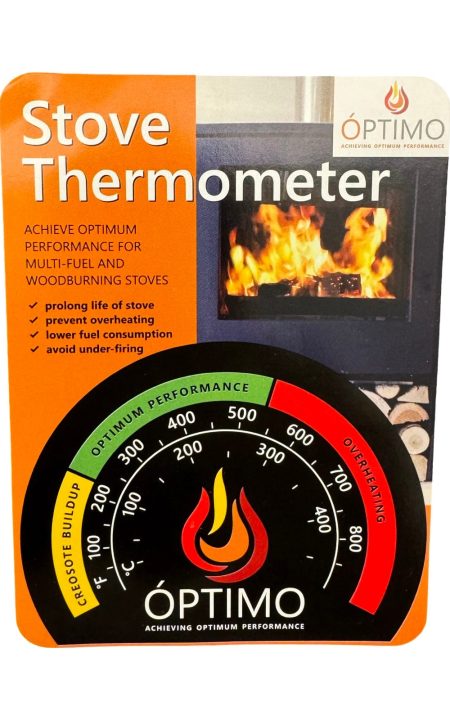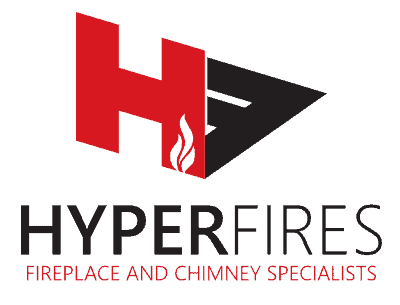No products in the cart.
Buyer's Guide
Fireplace Maintenance
fireplace & chimney specialists | hyper fires
WOOD BURNER MAINTENANCE & CLEANING
SHOULD BE CARRIED YEARLY
Servicing and cleaning forms an integral part of maintaining your fireplace. A small layer of ash should always remain on the floor plate, this will protect the floor plate and create a high base temperature below the fire. The ash draw should be cleaned out after every use to prevent the ash from heaping up and touching the under side of the grate and distorting it.

WOOD BURNER MAINTENANCE & CLEANING SHOULD BE CARRIED OUT YEARLY
Wet wood which is not seasoned properly will cause soot collection on the fireplace window and creosote build up inside the combustion chamber, the glass can be cleaned off by using a damp cloth and some of the fine ash as rubbing compound, then clean with a clean damp cloth.
Before the start of the season check that the door and glass rope seal is intact to ensure that your fireplace efficiency stays optimal. Have the chimney swept regularly to prevent chimney fires, this must be done every year depending on how often you use your fireplace and how wet the wood you are using is [also see chimneys & principles section in the buyers guide]. Check that your fireplace liners are intact, these liners prevents the fire coming into contact with the steel body. If the liners are cracked the will still do their job even though they might not look sightly.
The inside of your firebox will oxidise where the flames burns off the high heat paint and the oxygen binds with the exposed steel. To slow this process down a light sand will be required and respray with an appropriate high heat spray. Remove the top baffle plate and clean out any soot that might have accumulated on top of it. Over firing of your appliance will cause excessive corrosion of the steel or cast iron surfaces on the inside and outside of the fireplace. If the steel or cast iron is over fired it will cause the material that the fireplace is constructed out of to rapidly expand and contract and the paint will start to fail. Once this happens and the unit is not touched up the oxygen will bind with the exposed surfaces and cause oxidation to occur.
Caution not to overload the appliance with firewood, this will decrease performance, reduce the energy efficiency and accelerate the wear and tear of the appliance. Do not exceed the maximum load of firewood or burn the fireplace with the air vents fully open, overloading and over firing the appliance voids all the manufacturer’s warranties.
To clean the glass, be careful to spray the cleaning product on a cloth and clean only the glass, without wetting the rest of the door. Window-cleaners and special products often contain chemicals that attack the paint and the ceramic fibre seals and cause oxidation of the metal parts. It’s very important not to wet the wood burner with window cleaner, water or special cleaning products.
It is advisable to always leave some ash on the floor of the fireplace, this will protect the floor plate and will help to build and maintain a fire. Special care should be taken to clean the ash pan below the fire grate in order to prevent the ash from touching the grate. Not only will this prevent air flow it will cause the grate to burnout prematurely or warp due to the exposure of excessive heat. The primary air on the fireplace should be used for start up in the fully open position only, there after it should remain only 20-30% open otherwise to much airflow through the grate can cause a similar effect to the above mentioned where the floor plate can be warped.
Fixation screws inside the fireplace can be loosened and sprayed with Q10 or silicone spray and turned back in again to prevent them from fusing with steel with very high temperatures. This way replacing your glass or panels down the line will be easy and you will avoid having to drill the screws out re replace them.
Where the fireplace is installed in coastal conditions extra maintenance will be required on all steel and cast iron surfaces both inside and outside the fireplace to reduce the corrosion. Rub rust back, paint and then maintain with either a graphite paste or a mixture of 50/50 linseed oil / mineral turps.
It’s very important not to wet the wood burner with window cleaner, water or special cleaning products. Heatproof paint is not waterproof. Clean the paintwork with a feather duster or soft, dry cloth. If on your yearly maintenance the inside of the appliance requires painting, the manufacturer makes a spray paint available from your dealer.
You should check the chimney yearly and if required have it swept to keep it clean and in good condition. Creosote build-up in the chimney could cause it to catch fire.
On days with adverse draught conditions (very low atmospheric pressure, heavy frosts), or when the flue is very cold, or in chimneys with a poor draught, you can help the draught to start before lighting the fire by heating the flue:
- Prepare the wood for lighting inside the wood burner.
- Place a firelighter or a sheet of newspaper on the deflector or on top of the wood at the start of the flue and set fire to it.
- After a few seconds, when the chimney draught starts, light the wood as instructed.
- Hyper Fires does not take the responsibility of any water leaks down the inside of the flue due to the cowl being galvanised [galvinsed cowls are heavy and to slow].
- Please note that the installers used to install your fireplaceare subcontracted to you and should be paid directly by yourself.
- All freestanding fireplaces are supplied standard with 3,6m flue. Any adional flue required to ensure the fireplace working optionallyare for the clients own account [unfortunately it is not always possible to advise telephonically the length of flue required]
- Fireplaces and braais can be painted with Etch coat primer
- Please note that it will seem as if the fireplace is smoking the first time when lit. This is quite normal, it’s the paint burning in. The fireplace will also give off a chemical smell, this will disappear after the first couple of hours.
- Rotating cowls must be greased twice a year. Not greasing the cowls will relate in water leakage and the fireplace smoking.
- All steel exposed above roof level will corrode and should be treated accordingly. paint with NS4 and topcoat with enamel paint. s/steel parts will discolour when heat is applied.
- When build-in braais or fireplaces are installed an expansion gap pf 20mm should be left between the brickwork and the unit.
- All juntions and cowl boxes must be fixed with rivets or self-tapping screws
- All seams on flues, junctions and cowl boxes must be sealed with heat resistant silicone.
- Silicone wire should be used to connect the light fitting.
- Any water leaks that may occur should be reported to the relevant installer directly by yourself, their contact numbers can be obtained from us.











